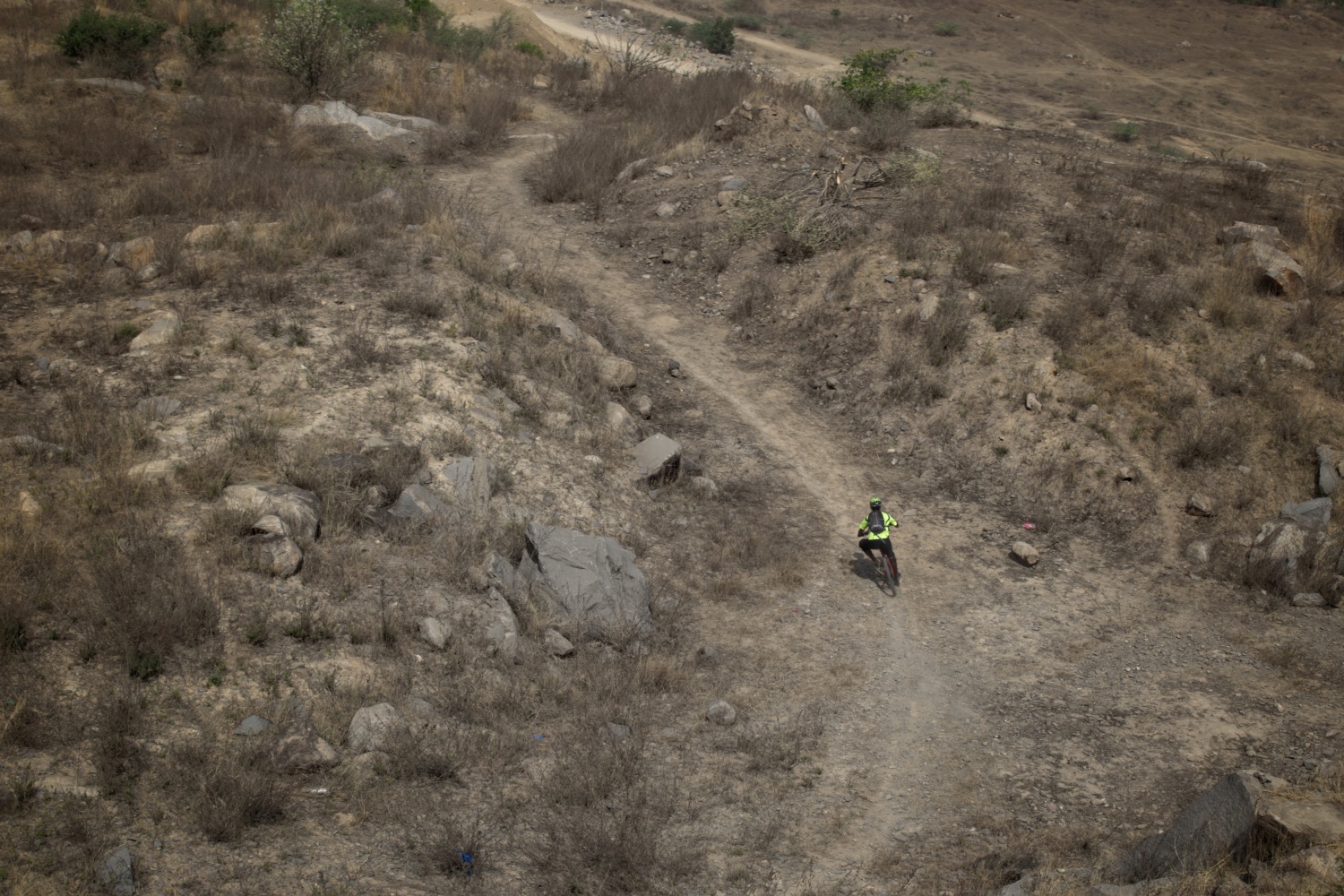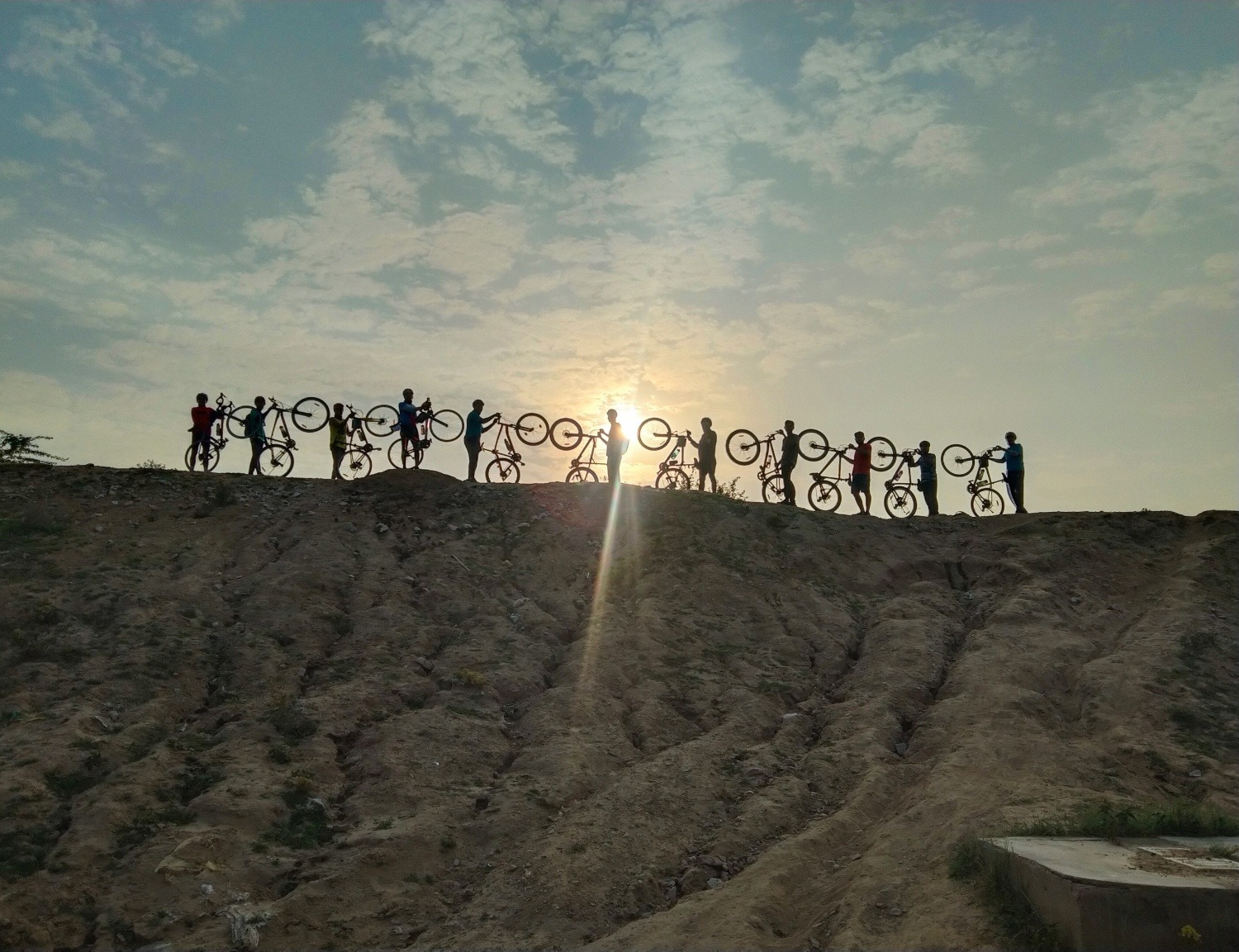Wondering how to go Cycling in Indian Summer conditions? Most of India faces extreme summers and you need to know this to cycle safely here! Ignoring the heat can be uncomfortable at best and lethal at worst…
Cover Photo: Sajid Padinjare Peediyekkal
Location: Aravakurichi at the 1200 LRM of God’s Own Country
The majority of the Indian peninsula faces varying degrees of summer conditions for 9 months a year. As cyclists here, we have to ride and train in this weather. The other option would be to relocate to the hills somewhere in the country or give up riding for half the year.
Riding in peak summer comes with its own set of challenges, which if ignored can be catastrophic. Here’s a quick guide to understand summer cycling and things to do to make your life easier on the saddle…
What’s the Big Deal about Cycling in Indian Summer?
When you are cycling or indulging in any form of exercise, your body is generating immense amounts of heat. On your bicycle only 25% of the power generated by your body is utilised for propelling you forward. The remaining 75% is expelled as heat.
This ratio gets even more skewed when you take into account high ambient temperatures. To cope with the power loss in the summer, a rider needs to take extra precaution.
Not doing so, simply means, that you will stop enjoying your ride. You will push yourself harder for a few days, wondering why your performance has dropped. And then you will stop cycling altogether because of the unhappy experience.
Not taking the heat seriously will effect your ride and recovery. Every additional day of riding will feel worse than the previous day. Eventually landing up sick and unable to ride.
Intensity Matters
What is the level of intensity of your planned ride? Answering that question will help you plan your hydration and nutrition with much more ease.
Your ride can range from an easy commute to an intensive interval training session. Using time as the only marker can be misleading. A shorter ride is not necessarily an easier ride.
As your ride gets more intense, so should your focus on proper nutrition and hydration. For less intense rides, regular food and drink might suffice. At the other end of the spectrum you might need to supplement it with performance oriented foods.
Not just the rider intensity, you also need to factor the intensity of the sun. If you are riding early in the morning, you will enjoy cooler temperatures as compared to riding in the evening. You need to be prepared accordingly.
Typical Riding Pattern: 2 hour morning ride
Most of us recreational cyclists end up riding 1-2 hours early in the summer mornings. We wake, get dressed and immediately head out for a ride. What can you do to make such a ride easier in summer?
On an average we cyclists need around 500-700 ml of water per hour. This number varies within this range, as some people tend to sweat more than others. You need to experiment to find your own sweet spot.
Even for the same rider, the amount of liquid intake will vary depending on the ambient temperature and the intensity of the ride.
For an hour long medium-intensity ride, you can eat a banana or two before heading out. Fruits like bananas are easier and faster for the body to absorb, as compared to cooked complex foods. You can then carry one bottle of water for the hour long ride.
For multiple hours, you can use this as a ballpark figure to be multiplied per hour. Keep in mind that as the hours tick by, fatigue will need you to hydrate more. For even longer rides, plan to take short stops for tea or sugarcane juice or something similar.

Post Ride Nutrition
If you have taken adequate care of your nutrition and hydration during the ride, then you should not reach home half-dead!
Once you are back home from your ride, a glass of water should be enough to hydrate you properly. If you did not drink enough during the ride, then you might need more than just a glass.
Post your morning ride it is time to have your breakfast. Your food intake should be whatever you normally eat at home. Be it poha, parathas, dalia, idly or anything else. After cycling in Indian summer, it is important that you consume your meal within half an hour of finishing your ride. The latest being an hour after your ride.
The rate of nutrition absorption is extremely high in the first hour after you finish your workout, so utilise that to the maximum.
Post freshening up, the next thing to be done is eat. Don’t delay it any further.
Supplementing the Main Course!
There are a number of brands in the Indian market which sell a number of solutions to supplement your diet.
Do you actually need any of those?
If you are an average recreational rider out on a joyride, then no. You don’t need any such thing for your regular rides.
But these supplements are highly formulated nutrition and hydration foods. So yes, these are beneficial, under the correct circumstances.
If you are training for a race or any other intense activity. And you are planning to use such products during your competitive event. Then it is prudent to try out all your products while training.
It is okay to make mistakes with your nutrition and hydration on a training ride. Making those same mistakes in a race will have catastrophic consequences.
Different formulations work for different people in different ways. Experiment before your event.
Watering it Down
One common mistake that many cyclists make is to mix these supplements in water disproportionately. Riders mix it as per taste, ignoring the recommended quantity.
We try to make it like a home sherbet. The recommended quantity makes it relatively bland. Mix these salts as per what the company recommends. At most, you can add more water than necessary but not less.
For example, if a company recommends mixing 1 tablet with 250 ml of water, then you can experiment with 1 tablet for 250-500 ml of water. See what works best for you, but at no point of time should you mix that tablet in less than 250 ml of water.
Another excellent roadside hydration drink is sugarcane juice. When you are tired, you might feel like drinking two or more glasses. Because it feels refreshing. But once you get back on the saddle, you realise, you feel more drowsy and lethargic, than before drinking the juice.
The high concentration of sugar takes time for your body to absorb. Which results in the body craving for even more water to digest this liquid you ingested. Water down your sugarcane juice as well.
Hydrating for Indoor Training
Riders often are lulled into thinking that since you are indoors, the heat will not be as taxing. This false assumption can catch you off guard.
When riding outdoors, even at relatively slow speeds, the wind helps you cool off. Your sweating body acts like an automobile radiator, radiating the heat away from you.
Indoors, you don’t have the luxury of this wind. Even the best of fans cannot replicate the volume of air being circulated around your body.
As a result, you need to take even more care when training indoors as compared to training outdoors.
Listen to your body. Your instincts will guide. Experience will help fine tune those instincts.
Over Hydrating
Hyponatremia is the case of low sodium levels in the blood. For cyclists, it can be caused by over hydrating. You end up drinking excess plain water which causes an imbalance in the sodium levels in your body.
As your sodium levels drop, your body will not function at full capacity. One of the first things you will notice is cramping of your muscles.
Hyponatremia is a rare case and is almost unheard of in cyclists. We more often than not, consume less rather than more. As such, this is not something we need to worry about excessively.
Drip Irrigation
Drip irrigation is used in farming, where instead of a lot of water being given to the plants at one time. The water in small quantities drips onto the plant.
Similarly we cyclists need to hydrate ourselves. Rather than trying to consume a lot of liquid too quickly, we should consume it in smaller quantities. Giving our body more time to absorb those smaller quantities.
Drink small sips of water at more frequent intervals, rather than gulping a lot of water after a long time.

Water Temperature
At home we drink cold, cool or room temperature water. We can have it as we choose. But how should we do it on the saddle?
Keep it cool to cold, depending on your comfort level. Use insulated water bottles to maintain the temperature of your water. If you are carrying two bottles for a long ride, one can be cool water and the other could be frozen. During the ride, the ice will melt rapidly in this heat, providing you a cool refreshing drink, when you need it most.
Cold water helps lower the core body temperature when cycling in Indian summer.
To Sum Up
TL:DR, keep the below in mind when cycling in hot conditions.
- Stay Hydrated
- Fuel Properly
- Listen to your body
- Rest frequently while riding
- Plan and prepare for your ride a night in advance
- Acclimatise to the heat gradually
- Ride early in the morning or evening. Avoid peak temperatures
With these points at hand, you will be able to enjoy riding comfortably through the summer…
Text: Knowledge by Sumit Patil
Also read how Yoga for Cyclists helps with recovery and avoiding injury. And How to Ride your First Century.

